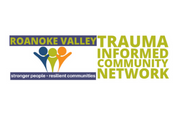Using somatics to explore trauma can help make authentic connection and collectivity more possible.
In 2009, my beloved movement comrade Malkia Cyril invited me to a course called Somatics and Social Justice being offered by a group called Generative Somatics.
“The word somatics comes from the Greek root soma, which means ‘the living organism in its wholeness.’ It is the best word we have in English to understand human beings as an integrated mind/body/spirit, and as social, relational beings. In somatic speak, we call this embodiment ‘shape,’ and the collective ‘body’ or collective psychobiology. Somatics is a path, a methodology, and a change theory by which we can embody transformation, individually and collectively. Embodied transformation is foundational change that shows in our actions, ways of being, relating, and perceiving. It is transformation that sustains over time. Somatics pragmatically supports our values and actions becoming aligned. It helps us to develop depth and the capacity to feel ourselves, each other and life around us. Somatics builds in us the ability to act from strategy and empathy, and teaches us to be able to assess conditions and “what is” clearly. Somatics is a practice-able theory of change that can move us toward individual, community and collective liberation. Somatics works through the body, engaging us in our thinking, emotions, commitments, vision and action.” (From “What Is Somatics?,” Generative Somatics)
I went through the course with equal parts enthusiasm and trepidation. It was a learning year for the organization, but enough of what was offered stuck with me that I said yes to another course a couple years later, Somatics and Trauma. In each course, I was learning the basic building blocks of the methodology, learning to drop in and feel myself from within, to begin to understand how I had been shaped by the circumstances of my birth, and the structures of my generation.
I also began to feel my true center, my center of gravity, the center of my being. It was a place inside myself that was as vast as the ocean, that gave me the resources I needed to feel all of my feelings and still be in my dignity, to make mistakes and still be in my dignity, still be connected to other people, to stay open and present. I learned new things about pain. My pain was holding onto my past for me. In an individual, pain can be a reminder of what we have not turned to face. For me, that included memories I had seemingly displaced with my survival behavior of dissociation.
It is still a rare thing for most of us to sit with what we feel, how we feel, the reality that we carry memories and feelings from what our ancestors experienced, and that we carry our current continuous collective trauma together. The pain can open to other feelings, more nuanced and clear. It can begin to make authentic connection and collectivity more possible.
To read more of Adrienne Maree Brown's article, please click here.

Comments (0)